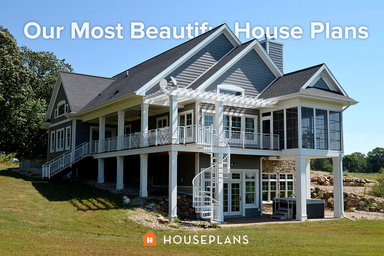At the end turn of the 20th century architects developed a new aesthetic that rejected the excesses of Victorian styles and the formality and rigidity of Classicism. The new aesthetic was termed Craftsman and, as its name implied, was a celebration of simple craft and the joining of pieces into a whole. A new language for trim elements was needed to fit with the overall Craftsman architecture of asymmetry and craft -- which ultimately produced the Craftsman bungalow. Frank Lloyd Wright and Pasadena architect brothers Charles and Henry Greene were especially influential and were inspired in part by Japanese joinery as exemplified by the Japanese Pavilion at the Chicago Fair of 1893. Here are the key Craftsman style trim elements (and illustrated in the image at the top of this post).
Because the Craftsman style celebrates the assemblage of pieces, each piece of the construction is expressed. The traditional cornice is gone so that the roof structure can be expressed with rafter tails that extend out beyond the face of the house. To further emphasize these rafter tails and allow the roof to be expressed simply, there are no cornice returns. Rather, there are broad overhangs and to further accentuate the overall lightness of the roof, raked eaves are introduced.
Additional expressions of structure are brackets that provide visual support to overhangs. These brackets are typically made up of simple pieces of wood without any volutes or other classical motifs.To hold the design together are horizontal trim elements such as a belt line. These are needed because these designs relied on accentuating individual elements and a loose, almost random type of composition. Belt lines could be used as reference to establish tops and bottoms of windows and to extend certain reference points, such as porch roofs, around the house.
References to designs found in nature are also an important elements to the Craftsman aesthetic. A great example of this is the Tree of Life door at the Gamble House of 1908 in Pasadena by Greene and Greene.
(Photo courtesy Gamblehouse.org.) Another place to add a reference to nature is at the gable end pediment. While in Classical architecture this area would have references to Classical mythology, it’s an ideal place for some added trim work that alludes to the natural world.
The one architectural element of the Craftsman style that belies its overall lightness is the elephant column. These columns were typically oversized and massive, starting out as simple rectangles at the base and then with tapered shafts that led to small, rectangular capitals. There’s absolutely no resemblance between the columns of antiquity and the squat and angular piece.
Because the Craftsman style celebrates the assemblage of pieces, each piece of the construction is expressed. The traditional cornice is gone so that the roof structure can be expressed with rafter tails that extend out beyond the face of the house. To further emphasize these rafter tails and allow the roof to be expressed simply, there are no cornice returns. Rather, there are broad overhangs and to further accentuate the overall lightness of the roof, raked eaves are introduced.
Additional expressions of structure are brackets that provide visual support to overhangs. These brackets are typically made up of simple pieces of wood without any volutes or other classical motifs.To hold the design together are horizontal trim elements such as a belt line. These are needed because these designs relied on accentuating individual elements and a loose, almost random type of composition. Belt lines could be used as reference to establish tops and bottoms of windows and to extend certain reference points, such as porch roofs, around the house.
References to designs found in nature are also an important elements to the Craftsman aesthetic. A great example of this is the Tree of Life door at the Gamble House of 1908 in Pasadena by Greene and Greene.
(Photo courtesy Gamblehouse.org.) Another place to add a reference to nature is at the gable end pediment. While in Classical architecture this area would have references to Classical mythology, it’s an ideal place for some added trim work that alludes to the natural world.
The one architectural element of the Craftsman style that belies its overall lightness is the elephant column. These columns were typically oversized and massive, starting out as simple rectangles at the base and then with tapered shafts that led to small, rectangular capitals. There’s absolutely no resemblance between the columns of antiquity and the squat and angular piece.






